Conversations in Creativity: Judith Annakie-Eriksen

"For me, making ceramics is filled with a rollercoaster of emotions, from the stillness of building, the anticipation of glazing, the anxiety during the firing, and to the delight (and relief) when faced with an intact and beautiful ceramic creation."
My love affair with clay began in the late 1990s in South Africa after receiving an intriguing vase as a gift. I attended weekly classes with a focus on hand-building for about five years with ceramicists, Kim Sacks and later with Loren Kaplan.
Following a career in communications and after returning to the UK, I decided to take the leap from hobby potter to full-time ceramicist in 2020. I now devote all my time to thinking about and making ceramics, developing my story, as well as honing my skills.
Working mainly with white porcelain clay and occasionally with Vulcan black stoneware clay, I like to make functional ceramics in the form of tableware and décor. In terms of influences, I am drawn to the simple forms found in Scandinavian design, the repetitive colourful patterns applied to African textiles, and modern jewellery design. I have been a member of The Black Artisans since 2024.
What was your first memory of creativity?
As a youngster I remember being more drawn to pens and paper rather than toys. I would occupy my time for hours drawing pictures of people and animals. I particularly remember at about the age of six years doing a painting of the footballer Bobby Moore on the largest sheet of paper available in the classroom. I painted him with red and blue poster paints in his football kit with his name at the top of the page and my name at the bottom. My class teacher, whom I liked very much, showered me with so much praise, gave me a star and pinned the painting on the wall.
Today, over 50 years later, I still have the same feeling of immense pride and warmth when receiving compliments about my work.
What was your creative journey to get to where you are?
I have always been a creative person. I was keen to follow foundation art at college but was persuaded by my parents to continue with A levels with the aim of bettering my work prospects. Over the years, I have (and still do very occasionally) dabbled in crochet, charcoal or acrylics artworks, sewn my own clothes and soft furnishings, and embroidered.
When I first touched clay in a pottery class, I felt a real connection with the material. My early hobby works are evidently influenced by my teacher and friend Loren Kaplan. When making with clay, I spend a lot of time on the visual proportions and physical balance of the piece.
I particularly like the natural texture of fired clay and use limited colour palettes when glazing which provide for functionality. My decorating style has been described as “very controlled”.
I think this was a compliment. Creating with clay is a grounding, tactile, and soothing experience in which I must engage almost daily.
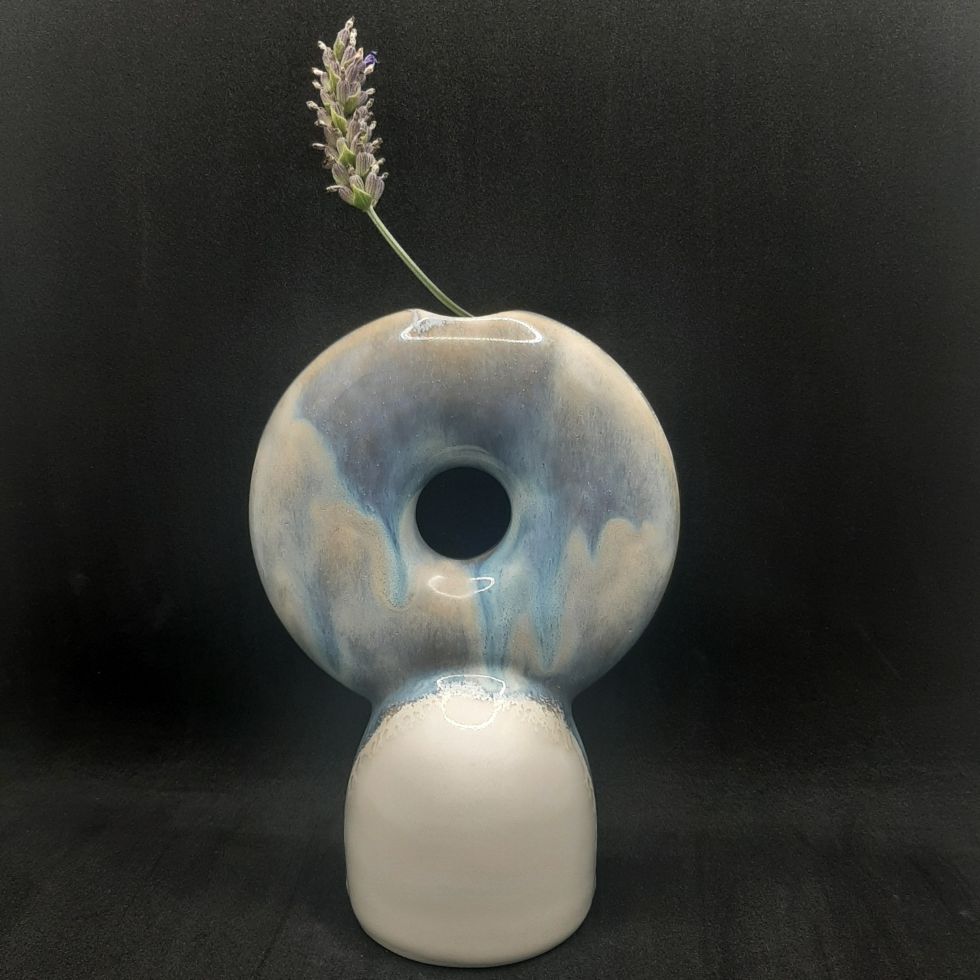
What impact have big name clients had on your career?
Any and every sale is a delight and massive boost to my confidence.
How do you establish your own style over a period of time, and still stay relevant?
I suppose I am a “less is more” sort of person and interestingly my black and white “Speckles” collection seems to reflect the dominating blocks of monochromatic clothes in my wardrobe.
The main focus of my ceramics is functional ware. I am constantly developing new pieces to add to my three ranges so that clients can build their collection over time or purchase just one statement piece. Even a small salt and pepper set could provide interest at the dinner table, I think. My aim is to make my ceramics ranges accessible, usable and still special … whether as a treat for oneself or as a gift for loved one.
I subscribe to the ideals of purchasing ethically, shopping small and local, and with longevity in mind. To that end – originally by accident, but now more so by design – I try to develop functional pieces which have multiple uses. For example, my oil and vinegar pourers can also be enjoyed flexibly as a posy vase, or a reed diffuser, or just because…
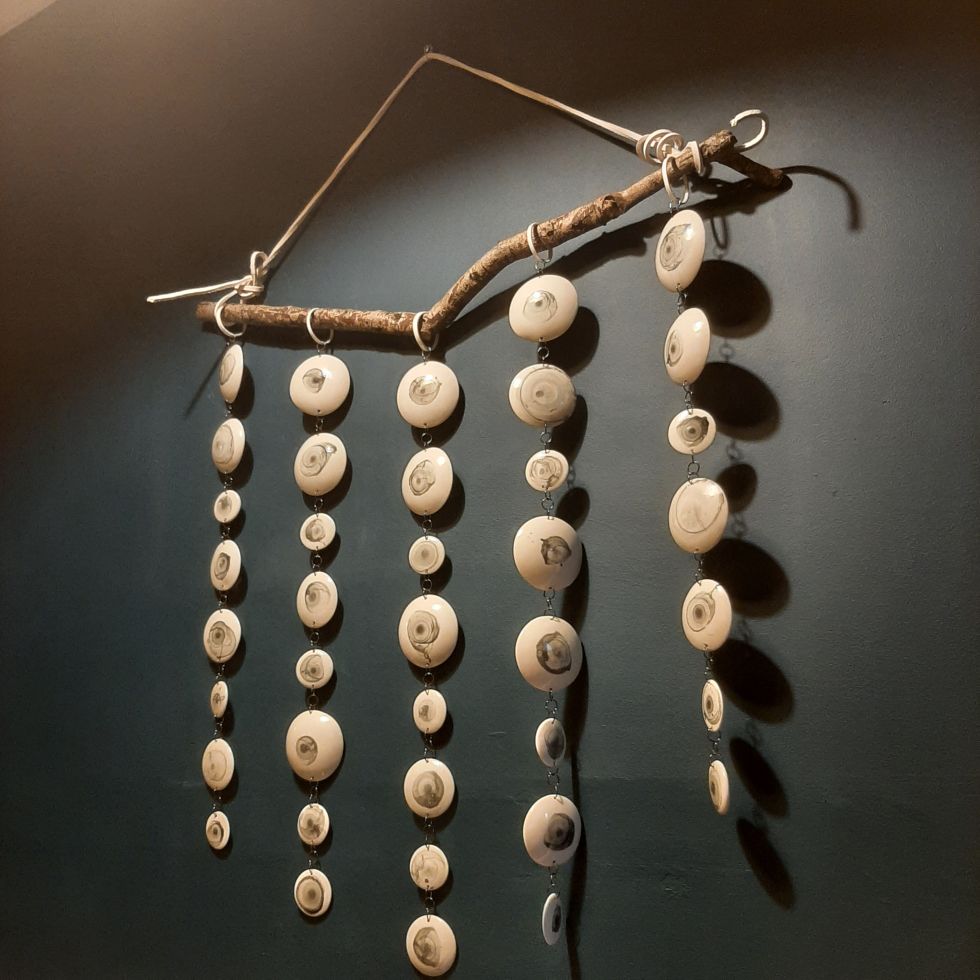
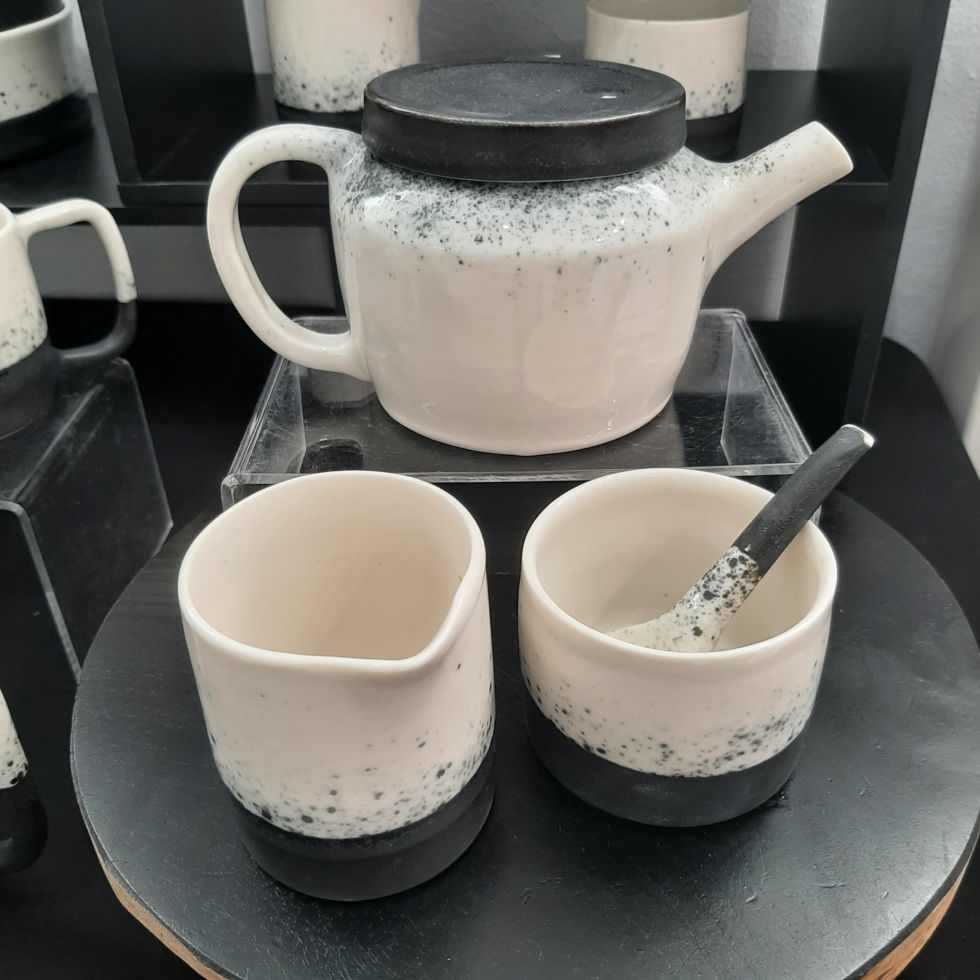
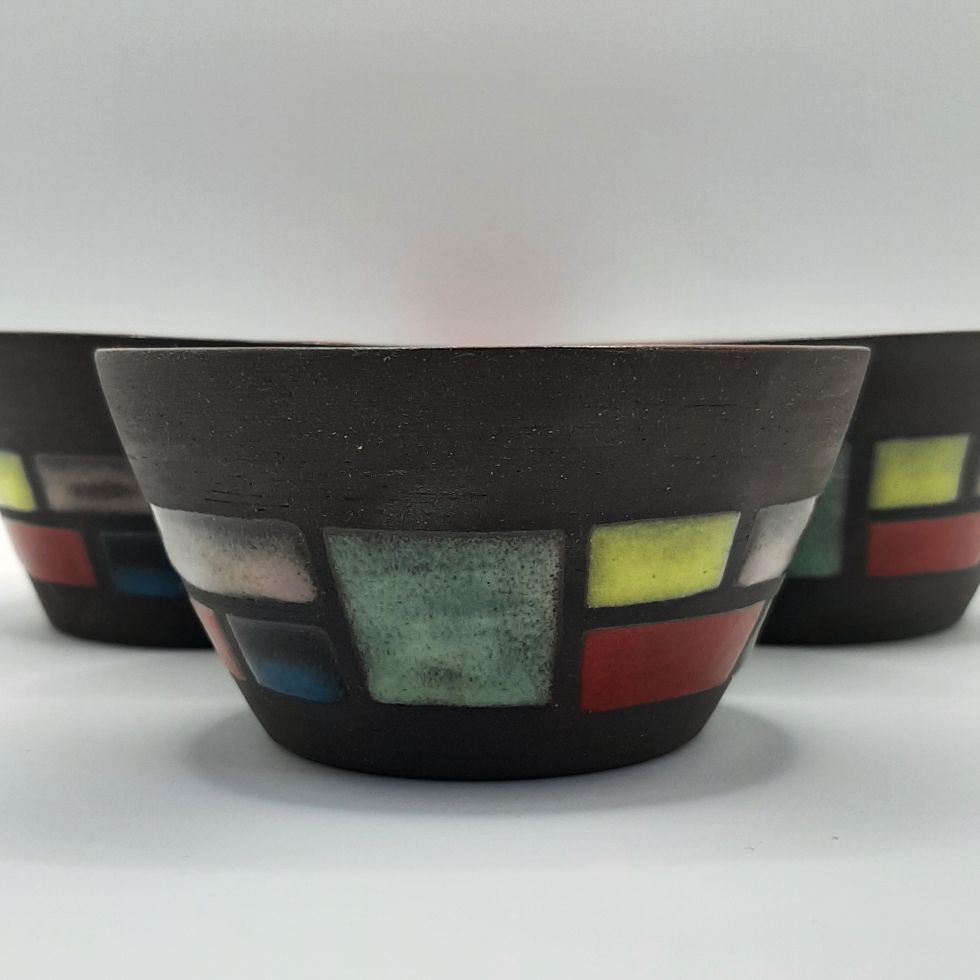
Does your work develop thematically, or is it more distinctive and random?
I don’t sketch or pre-plan my one-off pieces. I have tried, but it just does not work for my practice. (This is ironic considering my previous career when a plan was essential for every project.) As most of my tableware is produced in small batches, my production process is cyclical. At the end of a wheel-throwing session, as well as feeling “warmed up”, I sometimes have the need to have a bit of playtime, usually owing to that one recurring design idea fermenting in my mind.
So, I will weigh out a large lump of clay and play experimentally on the wheel, allowing a piece to evolve according to what looks and feels right in the moment.
Sometimes, but not always, the final result will have a resemblance to the original idea in my head.
Somehow, my more fluid way of working makes the piece feel more alive. Only when the piece is completed, will I then document it in my sketch book with details about clay, dimensions, glazes, and firing information, etc for future reference.
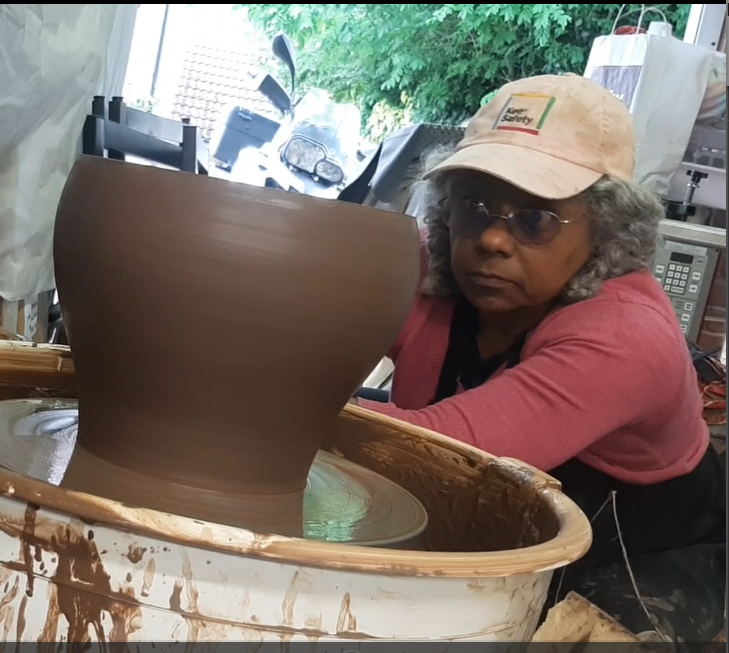
Who or what has been the biggest influence on your work and why?
Mr Spencer, my art teacher from age 11-16. The art room was a place of refuge to work on my own projects or learn about different art techniques outside the chaos of scheduled art classes.
Loren Kaplan, South African ceramicist, teacher and friend. Canada-based designer and hand-builder extraordinaire of sculptural clay works.
Dame Magdalene Odundo, Kenyan-British ceramicist. Burnished clay vessels with a strong sensuous feminine theme.
The minimalism, organic forms and calm colours of Scandinavian design, particularly furniture, and the feeling of harmony that it creates.

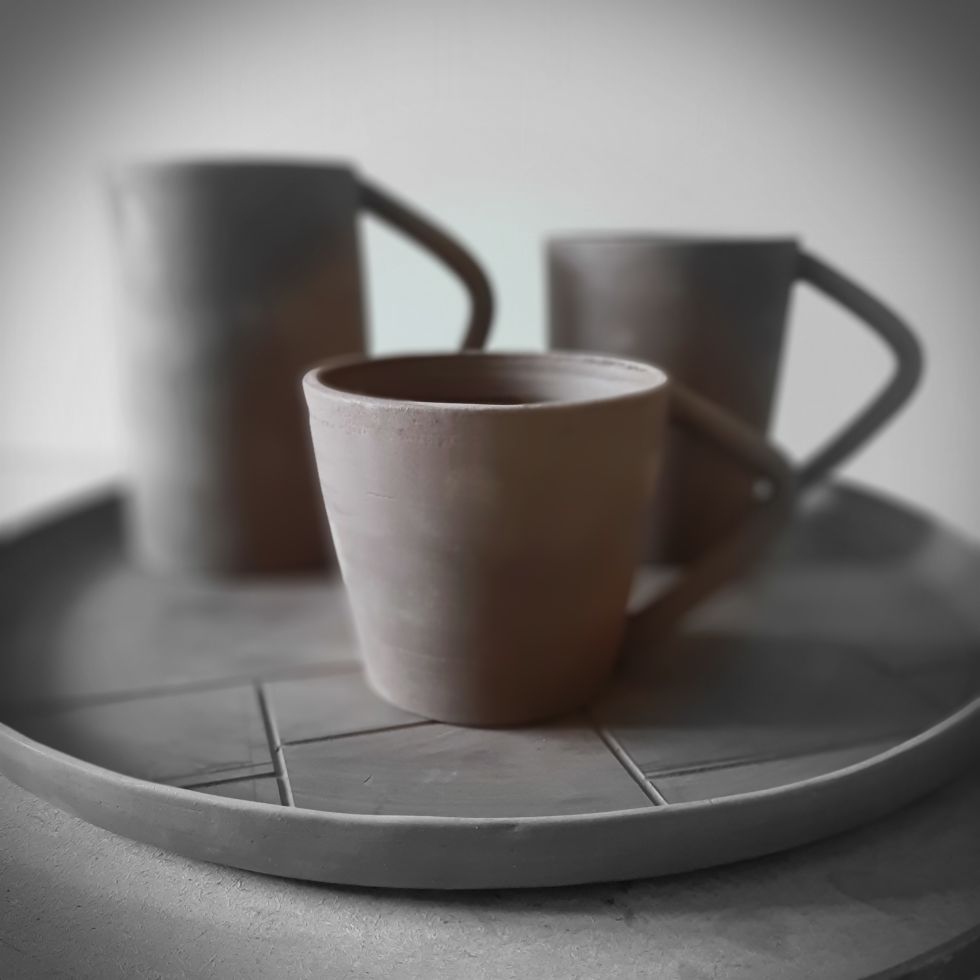

What inspires you or provokes the motivation towards creativity within?
Creating with clay, and my little dog, are my reasons for getting out of bed. Since transitioning to a full-time ceramicist, I don’t think I have lasted more than a week of not playing with clay. I quite literally experience a form of withdrawal. I have been known to take clay with me on holiday to create whilst my husband Jesper is flyfishing! For me, the act of making subconsciously generates invention which then refuels the perpetual cycle of making and creativity.
What is it you love most about what you do?
The immense sense of peace and quiet conversation that I have with clay.
Have a lovely day!
Love, Katy x